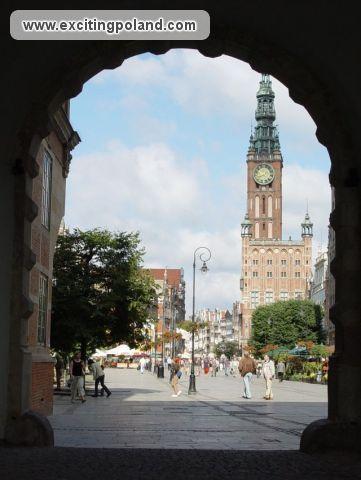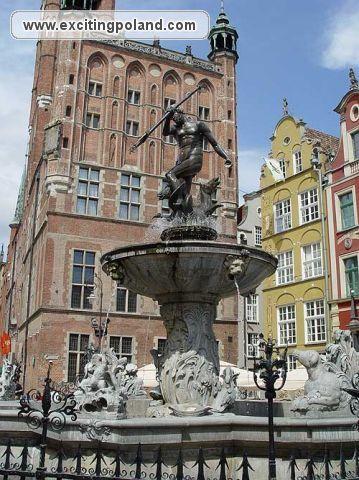Gdańsk – the maritime capital of Poland and a large business, science and tourist center. Lech Wałęsa started to overthrow communism here. Sopot, the smallest town of Tri-City, was one of the most fashionable Baltic resorts before WWII. Gdynia, the youngest of the three cities, boasts commercial, passenger and navy ports. It was the largest and most modern port on the Baltic coast before WWII. The coat-of-arms of Gdańsk.
Crane
A symbol of the city – the Gothic harbor crane sitting on the Motława, its arm was capable of lifting up to 4 tons of weight to a height of 27 m. Today it houses a branch of the Central Maritime Museum.
Mariacka Street
A charming street with restored characteristic forecourts; students and graduates of Music Academy often perform here. Old Town in Gdańsk.
St. Mary’s Church
A Gothic shrine from the 14th century designed for 25 000 worshippers, its astronomical clock was the biggest in the world; the tower (78m high) offers a magnificent view over Gdańsk.
Gdańsk Barbican
Remnants of the fortifications from the 15th century, comprise Executioner’s House interconnected with the Prison Tower. ul. Targ Węglowy,
Golden Gate
A Baroque structure, which replaced in the 17th century an earlier Gothic gate.
Green Gate
Green gate from the 16th century was the residence of Polish kings in Gdańsk. The Green Gate closes the Royal Route on the Motława side.
Town Hall
Town Hall of the Inner Town from the 16th century, initially a Gothic brick structure, later rebuilt in the Renaissance style. Its splendid interiors include the Read Hall of the Council. The seat of the Museum of Gdańsk History.
Artus Court
This Gothic stone house of merchants’ guilds with the biggest tile stove in Europe (10.5 m high, 520 decorated tiles) is standing next to Town Hall. Today it houses a branch of the Museum of Gdańsk History.
Neptune’s Fountain
This bronze statue in front of Artus Court epitomizes the maritime nature of the city.
Uphagen’s House
Old merchant tenement house with typical interiors from the 18th century. Today it houses a branch of the Museum of Gdańsk History and is open to tourists.
Granary Island
Only a few of the 300-some old granaries survived to this day. Between New and Old Motława River.
National Museum
National Museumwith a collection of Gdańsk paintings from 14th through 19th century and a gallery of Dutch painting, including the Last Judgment by Hans Memling, ul. Toruńska 1.
Cistercian monastery complex in Oliwa
Cistercian monastery complex in Oliwa with a cathedral built in 1200. Wonderful sound of organs from the 18th century blends with decorative sculptures: angels, suns and stars actually move during the concert.
Łaźnia Contemporary Art Center
Contemporary art exhibitions, quasi-artistic projects are presented and documentary films screened in the building of an old bath. Polish and foreign artists, acclaimed productions and young exploratory art.






